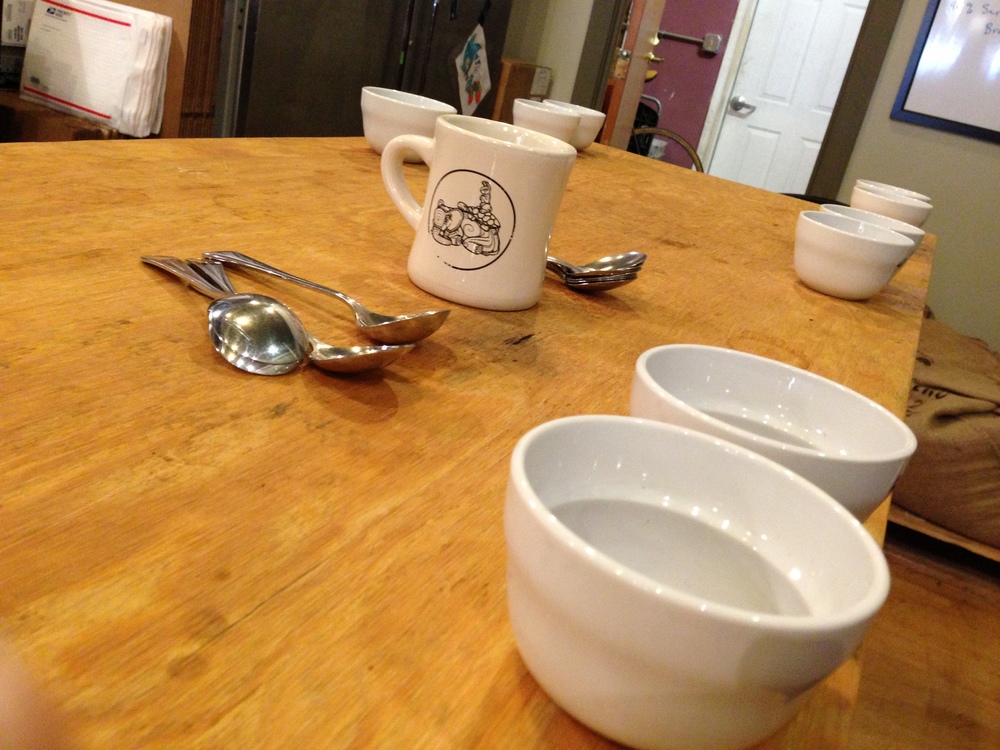This is the first of three posts you will see over the next several days describing the coffee cupping process and the whys and hows of Quills approach to it.
Part 1: Why We Cup
We talk a lot about the care that is taken in choosing our coffees. If you frequent our New Albany location, you may catch a glimpse of us in the back playing mad scientists- slurping and scrutinizing an inordinate number of coffee bowls. But what is this outlandish ear-displeasing practice about? Isn’t it a little much? After all, it’s just coffee....
Obviously we don’t think so. In fact, more and more people are getting tuned in to the complexity of coffee in its own right (listen to this great NPR feature comparing coffee tasting to the more well-known and appreciated wine tasting). And we think the quality of our coffee illustrates why our little science experiments matter. So we’re going to pull back the veil a bit and let you inside one of our main testing labs: the Friday Cupping.
Each Friday afternoon, our roastery team- along with a rotating crew of our baristas- comes together to evaluate the week’s roasts and sample any new coffees we are considering or developing.

The cupping process serves multiple purposes. Among them are quality control, education and coffee sampling for potential new offerings. We work on the first two of these repeatedly; Cupping the roasts from the preceding week to see how we did and discussing what we can do better next time. This is an essential process as even tiny changes in the roasting session can result in dramatically different results in the cup. This also serves as an ongoing educational piece for our staff as we get to know our coffees and how to brew them best.
But our primary focus for this series will be the third purpose: coffee selection.
Allow us to set up a scene for you: At a recent cupping our job was to find a replacement component for our Blacksmith Espresso blend. So we prepped our taste buds to try on, compare and contrast several options. This time we were taking a look at selections from Brazil which would serve as the foundation-or base-of our prized espresso blend.
Selecting for a blend is different than selecting for a single origin coffee. We want to find the coffee that will “play nicest” with the other coffees in the blend. As the base component we wanted to find one that would provide the “lower” -or deeper- tones (e.g. chocolate) and full, syrupy body that we love in our espresso. This perhaps illustrates even better the necessity of a good cupping process that will ensure we have the coffees we are most excited about. All of the coffees we bring in as samples have already been scrutinized by our importer, therefore we know that we’re choosing from a solid set of coffees. But it is more than simply choosing best from better. It’s about selecting the coffee that perfectly fills the particular hole in our lineup.

Without the right Brazil to serve as our base, our espresso blend could be entirely thrown off. The bright notes might overtake the whole experience leaving an espresso without body. It can feel almost like drinking flavored seltzer water if you’re not careful. But finding the right Brazil gives us the balanced espresso we're committed to serve- full of bright, citric notes but also full of sweetness and delivered with full body and texture. That was our aim. Stay tuned and we'll take you through the process in our next post.

